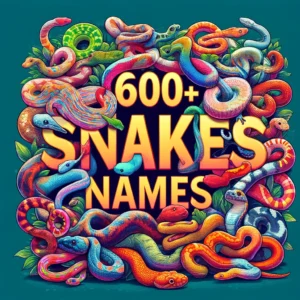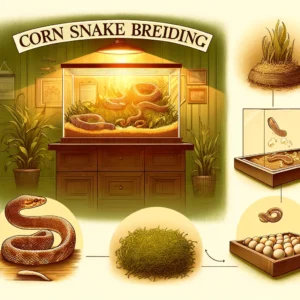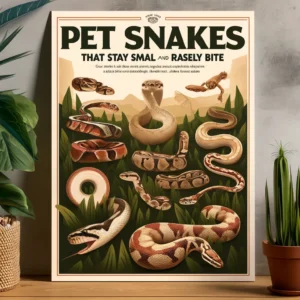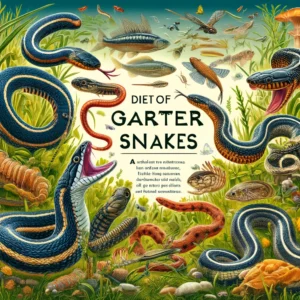Corn snakes are one of the most popular pet snakes due to their docile nature and relatively easy care requirements. An important aspect of their care involves understanding their dietary preferences, which can ensure they remain healthy and active. In this guide, we’ll explore the favorite foods of corn snakes, using headings to discuss different types of food, and provide a table to summarize the key information.
1. Mice
Mice are the staple diet for corn snakes in captivity. They provide all the necessary nutrients that corn snakes need to thrive. It’s important to match the size of the mouse to the size of the snake, typically starting with pinkies (newborn mice) for young snakes and progressing to larger mice as the snake grows.
Benefits:
- Nutritionally Complete: Mice offer a balanced diet for corn snakes, containing the right proportions of fat, protein, and other nutrients.
- Readily Accepted: Corn snakes naturally prey on rodents, making mice an instinctively preferred choice.
2. Rats
For larger corn snakes, rats can be an appropriate food item. They are similar to mice in nutritional content but are larger and more filling, which is beneficial for adult corn snakes.
Benefits:
- Satiety: Larger than mice, rats can satisfy bigger corn snakes and support their energy needs.
- Nutritional Value: Like mice, rats provide a comprehensive diet that helps maintain the health and vitality of corn snakes.
3. Chicks
Occasionally, small chicks can be offered to corn snakes as a dietary variety. This can help prevent boredom and stimulate the snake’s appetite.
Benefits:
- Variety: Introduces different flavors and textures to the snake’s diet.
- Nutritional Diversity: Adds different nutrients which might not be as prevalent in rodents.

Summary Table: Corn Snake Foods
| Food Type | Size Appropriate | Benefits | Frequency of Feeding |
|---|---|---|---|
| Mice | Pinkies to Adults | Nutritional completeness, easy acceptance | Every 5-7 days for adults |
| Rats | Juveniles to Adults | Satisfying, high in nutrients | Every 7-10 days for adults |
| Chicks | Juveniles to Adults | Adds dietary variety, nutritional diversity | Occasionally as a supplement |

Additional Foods for Corn Snakes and Daily Diet Planning
While mice and rats are the primary diet for corn snakes, there are other foods that can occasionally be included to provide variety. Here’s a look at some additional food items and how to plan a daily diet for your corn snake.
Additional Foods
1. Quail Eggs
- Benefits: Quail eggs can be a nutritious treat, offering variety in the diet. They provide vitamins, minerals, and a good protein source.
- Usage: Given their size, quail eggs are suitable for larger juvenile or adult corn snakes. They should be offered sparingly, perhaps once a month, as too many can lead to obesity due to their high cholesterol content.
2. Amphibians and Small Lizards
- Benefits: These can mimic more natural prey items for corn snakes, especially wild-caught ones. They provide a mix of proteins and other nutrients.
- Usage: These should only be used occasionally, if at all, due to the risk of disease transmission. Always source from reputable suppliers to ensure they are safe for your snake.
3. Fish
- Benefits: Some corn snakes may take to small pieces of fish. Fish can provide essential fatty acids.
- Usage: Ensure the fish is fresh and not seasoned. Offer small pieces that the snake can easily consume, and only occasionally to prevent imbalances in the diet.
Daily Diet Planning
Corn snakes do not need to be fed daily; their feeding frequency depends significantly on their age, size, and health. Here is a guideline on how to plan their diet based on age:
Hatchlings and Juveniles:
- Diet: Primarily pinkies (newborn mice).
- Frequency: Every 5-7 days. Young snakes need more frequent feedings as they are growing.
Adults:
- Diet: Larger mice or small rats, depending on the size of the snake.
- Frequency: Typically, adult corn snakes are fed every 7 to 10 days. Overfeeding can lead to obesity and health issues.
Seniors:
- Diet: Continue with adult mice or small rats.
- Frequency: Every 10 to 14 days, as older snakes often have a slower metabolism.
Important Notes:
- Variety: While variety is beneficial, it should not replace the core diet of appropriately sized rodents.
- Supplementation: No vitamin or mineral supplements are usually necessary if the diet consists of a variety of whole prey.
Here’s a summary table for a corn snake feeding chart by age, detailing the appropriate prey sizes and feeding frequency for each stage of a corn snake’s life:
| Age Group | Prey Size | Frequency of Feeding |
|---|---|---|
| Hatchlings | Pinkies (newborn mice) | Every 5-7 days |
| Juveniles | Fuzzies, small hoppers | Every 7 days |
| Adults | Adult mice, small rats | Every 7-10 days |
| Seniors | Adult mice, small rats | Every 10-14 days or as needed |
Conclusion
Feeding corn snakes involves more than just providing them with any type of food. Understanding their dietary needs and preferences ensures that they receive the right nutrition for growth and health. Mice and rats are the backbone of their diet, with occasional chicks to add variety. Proper feeding not only nourishes the snake but also enhances its overall well-being, making diet a crucial aspect of care for corn snake owners.

Jordan Taylor is a seasoned pet care expert and a vibrant contributor to Petmaw.com. With over a decade of experience in veterinary science, Jordan brings a wealth of knowledge and a deep passion for animals to every article. After earning a degree in Veterinary Medicine from the University of Alaska Anchorage, Jordan spent several years working in a busy veterinary clinic, where they honed their skills in pet nutrition, behavior, and wellness.
Jordan’s love for animals isn’t just professional; it’s a fundamental part of their life. Home is shared with three rescue Sloth, two cats, and a small flock of backyard chickens, each with their own rescue story and special place in Jordan’s heart. This personal connection to animals shines through in Jordan’s writing, making their advice not only expert but also empathetic and practical for pet owners.
At Petmaw.com, Jordan is dedicated to providing pet owners with the latest research, trends, and tips in pet care, from innovative feeding strategies to understanding the subtle signs of pet health issues. Whether you’re a seasoned pet owner or new to the pet parenting world, Jordan’s insights aim to enhance the well-being of pets and deepen the human-animal bond.
In their spare time, Jordan is an avid hiker, often found exploring the trails with their dogs. They also volunteer at local animal shelters, offering their expertise and helping animals in need find forever homes. Jordan’s commitment to animal welfare and passion for sharing knowledge makes them a cherished member of the Petmaw.com family and a trusted guide for our readers.





